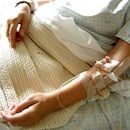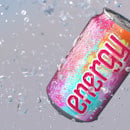
Breastfeeding Hospital Initiatives: What’s the Deal?
The new buzzwords in maternity care now revolve around the Baby-Friendly Hospital Initiative (BFHI), which has been around since 1991, but is now gaining momentum in maternity units throughout the U.S. This initiative was piloted through an effort by the United Nations Children’s Fund (UNICEF) and the World Health Organization (WHO) to ensure that all maternity units become centers of breastfeeding support.
In areas where hospitals have achieved baby-friendly status, more mothers are breastfeeding their infants, and child health has improved as a consequence (UNICEF, 2013). Since the BFHI began, more than 15,000 facilities in 134 countries have been awarded Baby-Friendly status. The internationally defined term “Baby-Friendly” may be used only by maternity services that have passed external assessment according to the Global Criteria for the BFHI.
A maternity facility can be designated “baby-friendly” when it does not accept free or low-cost breast milk substitutes, feeding bottles or teats, and has implemented 10 specific steps to support successful breastfeeding. They are:
- Develop a written breastfeeding policy that is routinely communicated to all health care staff.
- Train all health care staff in the skills necessary to implement this policy.
- Inform all pregnant women about the benefits and management of breastfeeding.
- Help mothers initiate breastfeeding within one half-hour of birth.
- Show mothers how to breastfeed and maintain lactation, even if they should be separated from their infants.
- Give newborn infants no food or drink other than breast milk, unless medically indicated.
- Practice rooming-in (allowing mothers and infants to remain together 24 hours a day).
- Encourage breastfeeding on demand.
- Give no artificial teats or pacifiers to breastfeeding infants.
- Foster the establishment of breastfeeding support groups and refer mothers to them on discharge from the hospital or clinic.
You can help your facility become baby-friendly by reaching out to other units that have attained the designation. You can also visit Baby Friendly USA for information and support in order to take the first steps in achieving the “gold standard of care” (Baby Friendly USA, 2013). In addition, the International Lactation Consultants Association (ILCA) offers sample documents as resources for hospitals to use, as they move forward in providing more extensive lactation support services.
A new movement to expand the BFHI to neonatal units is also currently underway, and experts hope to meet at an international conference in Sweden in November 2014 to develop and implement a “Neo-BFHI” for NICUs around the world.
References:
Baby Friendly USA, (2013). Guidelines & Evaluation Criteria. International Lactation Consultant Association [ILCA]. (2013). Resources Sample Documents.
United Nations Children’s Fund [UNICEF]. (2013). The Baby-Friendly Hospital Initiative.




